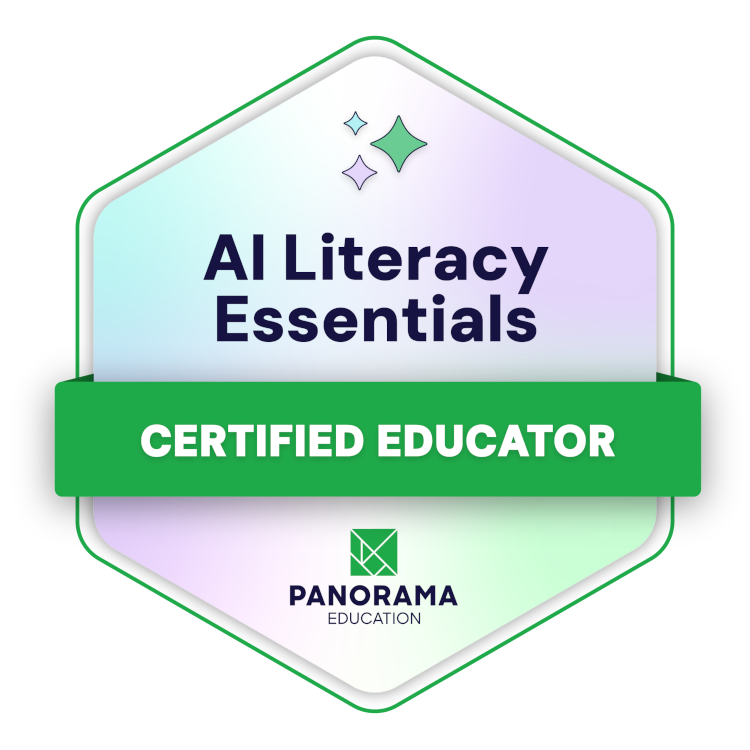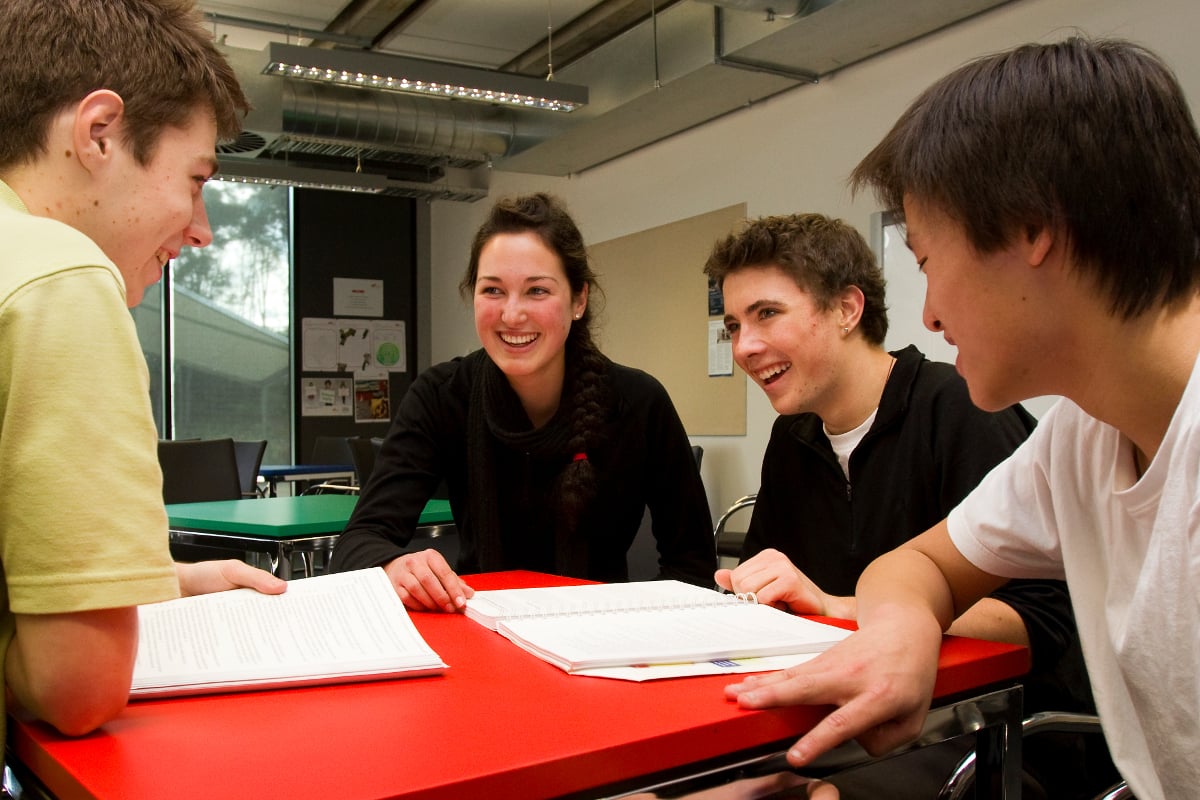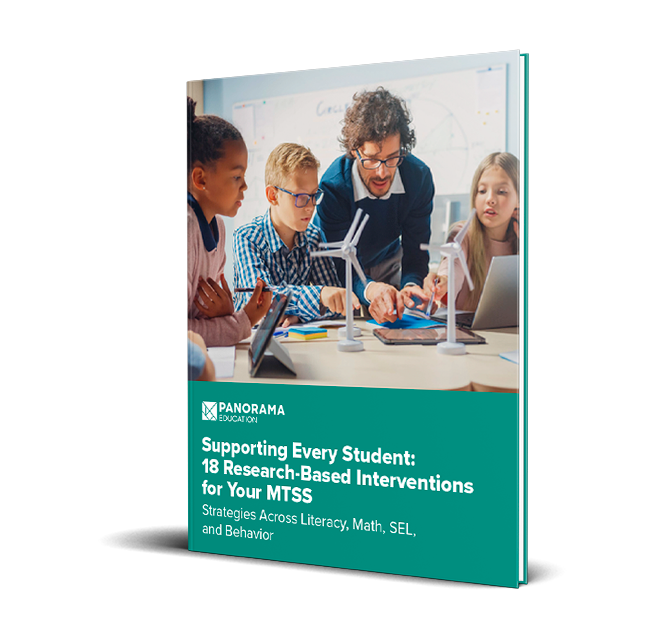Imagine you’ve been working with your students on a difficult new concept. You’ve all been hard at work for around 15 minutes.
But as time goes by, you begin to spot the tell-tale signs: blank stares, wiggles and fidgeting, and sighs of frustration.
Your students are losing interest and focus by the minute.
How can you get your class back on track and ready to learn again? This is an important concept, but clearly you’ve all had enough, and recess is hours away.
Sounds like it might be time to try a brain break.
Table of Contents
Why Are Brain Breaks Important?
Brain Break Activities For the Classroom
Explore More Resources for Educators
|
Key Takeaways:
|
Download 18 Additional High-Quality Learning Strategies From Panorama's Playbook
What Are Brain Breaks?
A “brain break” is an activity that takes you away from hard mental work and allows your brain and body to reset. Examples include:
- Movement breaks, which are physical activities like stretches, yoga poses, jumping jacks, push-ups, or a quick dance party.
- Mental breaks like deep breathing, mindfulness exercises, playing a game, or doing an art activity such as a printable coloring page.
These are meant to be quick and easy—a short break anywhere from three to five minutes can be enough to reset the mind and get students ready to learn.
Brain breaks, while often used for younger students, are useful for any age group (adults included!). When planning these breaks, a general rule to follow is that a three to five minute activity is appropriate for every 10 to 15 minutes of concentrated work time for elementary students, and every 20 to 30 minutes for middle and high school students.
Why Are Brain Breaks Important?
The brain is a powerful computer, and like any computer, it needs time to process. When we work intently on a project or focus on an activity, we need time to understand and synthesize that information. Just as you only have a certain amount of physical stamina to go for a run, you also have a limited amount of mental stamina to work on a project. Brain breaks are vital for helping our minds process what we’ve learned.
You might be wary to take time out of the day for a break, especially when students have so much material to learn. You may be concerned that a break would disrupt the entire class, and it would be hard to get students back on track.
However, many educators use brain breaks as a powerful classroom management tool. Research shows that brain breaks allow young minds to reset and recharge. They replenish the attention, motivation, and energy levels needed to keep learning. Students also learn better when lessons are broken up into smaller segments. This is especially true for younger children, whose attention spans are still developing.
In this blog, we outline two brain break ideas from leading organizations that you can use in your classroom to help your students refocus and be ready to learn.
|
|
Brain Break Activities For the Classroom
Calm Breathing Techniques

Courtesy of Open Circle
Overview: Help students understand what it feels like to be calm and to learn and practice several breathing techniques to help them calm down.
Instructions for Implementation:
Invite students to think about what makes them feel calm and relaxed (e.g. listening to music, reading a book, lying down). Share with students the following breathing techniques that they can use when they want to feel calm.
- Balloon Breathing: Sit in a relaxed, comfortable position. Breathe in slowly through your nose, filling your belly with air like a balloon. Breathe out slowly. Have students practice this technique a few times.
- Flower Breathing: Breathe in through your nose, imagining the fragrance of a sweet-smelling flower. Breathe out with an “ahhh” sound. Have students practice this technique a few times.
- Blowing Bubbles: Imagine that you have a jar of bubbles in front of you. Take off the lid. Dip the wand into the bubbles. Take a deep breath and fill your belly with air. Now take the wand out of the jar, breathe out very slowly in order to blow a large bubble, without popping it. Repeat these steps to blow more bubbles.
Ask students which technique they like best and suggest that they practice that method. Tell students that knowing and practicing calm-breathing techniques can help them be strong learners, helpful friends and successful problem-solvers.
Click here to access instructions for adapting this practice for virtual use/distance learning.
|
|
Growth Mindset Musical Plates

Courtesy of The Rooted School
Overview: When faced with a frustrating challenge, it is a good idea to take a step back and make sure we are calm and ready to use our growth mindset skills. Sometimes we get “stuck” in our old mindset. Use this quick and easy physical brain break as a fun way to get students moving and help retrain brains for growth mindset thinking.
Supplies:
- Paper plates
- Something to write with
Instructions for Implementation:
Decorate the plates with positive self-talk phrases. Here are some ideas:
- Challenges help my brain grow
- Practice makes progress
- I can’t do it...YET!
- I can do hard things
- This is tough, but so am I
- I’m learning from this
- I’m doing my best
- My best is enough
- Challenges make me stronger
Place plates face down on the floor or ground in a circle. Play some inspirational music and walk around until the music stops. When it stops, stand on the plate and read it out loud. How can you apply it to the current challenge?
Keep repeating walking with music until the frustration has subsided and the growth mindset has kicked in. Then, return to the challenge and use those growth mindset ideas from the plates to help you look at your challenge differently than you did before.
Click here to download the facilitator guide for Growth Mindset Musical Plates.
|
|
Explore More Resources for Educators
5 Life Skills Activities for High School
6 Middle School Life Skills Activities to Support Growth and Transitions
Life Skills for Elementary Schoolers: 6 Everyday Activities for Your Classroom
Morning Meetings: Cultivating a Culture of Care and Safety
The Lunch Bunch: A Small-Group Intervention for Building Social Skills
101 Inclusive Get-To-Know-You Questions for Students
|
Frequently Asked Questions: 1. How do I know if my students need a brain break? You can gauge if your students need a brain break by observing their behavior cues such as increased fidgeting, signs of frustration, or decreased engagement. These indicators suggest that they may benefit from a short break to reset and refocus. 2. Are brain breaks only suitable for younger students, or can they benefit older students as well? While brain breaks are often associated with younger students, they can be beneficial for learners of all ages, including middle and high school students. Regardless of age, everyone can benefit from brief periods of rest to recharge and maintain optimal focus and productivity. 3. How can I incorporate brain breaks into my lesson plans without disrupting the flow of instruction? Brain breaks can be seamlessly integrated into lesson plans by strategically planning them at natural transition points or scheduled intervals. By keeping brain breaks short and focused, you can ensure that they complement the learning process without causing significant disruptions. 4. Can brain breaks be adapted for virtual or distance learning environments? Yes, brain breaks can be adapted for virtual or distance learning environments by incorporating activities that students can easily perform at home. This may include guided breathing exercises, brief movement activities, or interactive games designed to provide a mental and physical break from screen time. 5. Are there specific brain break activities that are more effective for promoting engagement and refocusing students? While the effectiveness of brain break activities may vary depending on individual preferences and classroom dynamics, activities that combine physical movement with mental relaxation, such as deep breathing exercises or interactive games, tend to be particularly effective in promoting engagement and refocusing students. |
Download the toolkit: 18 Research-Based Interventions for Your MTSS


.jpeg)




